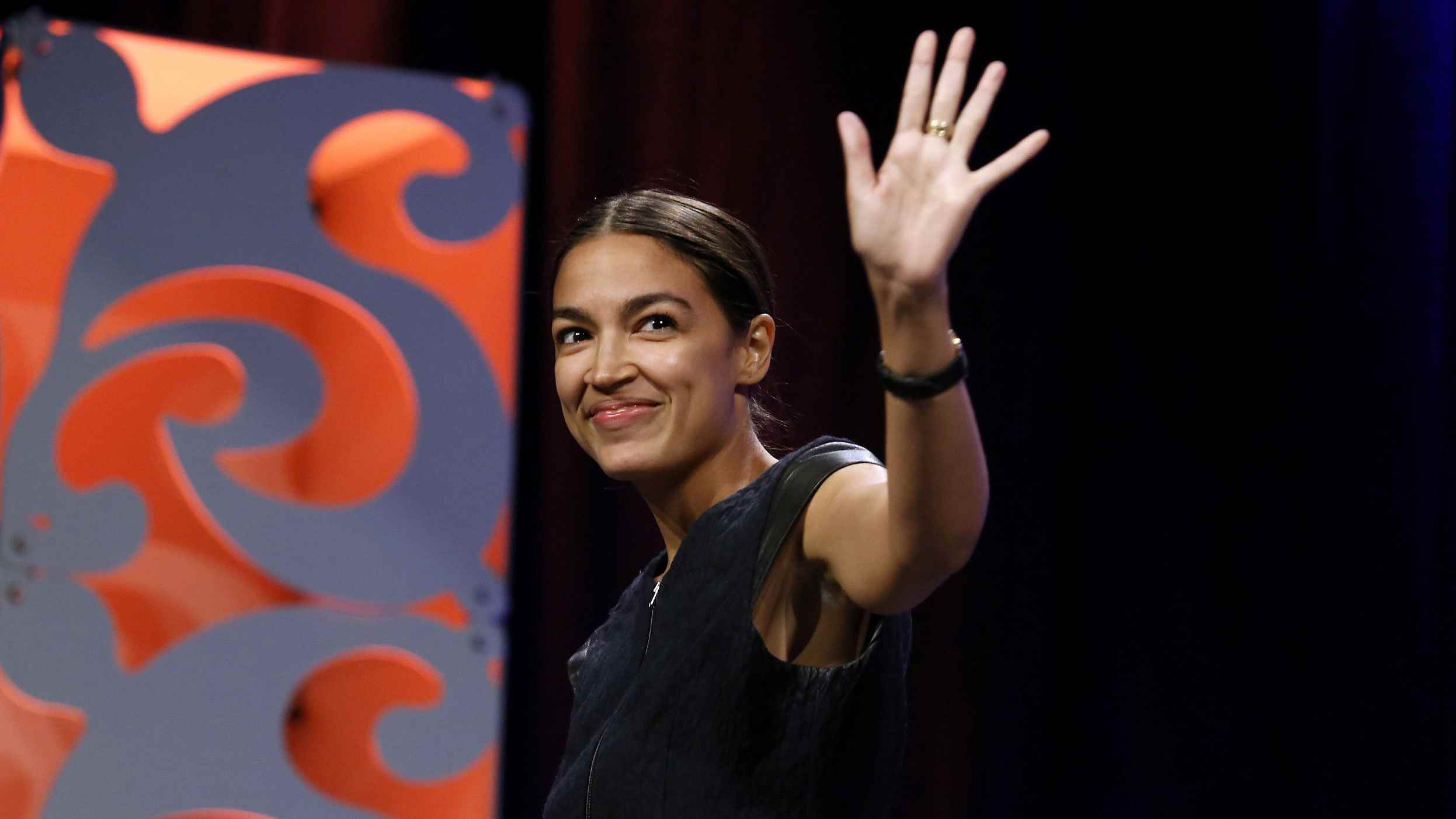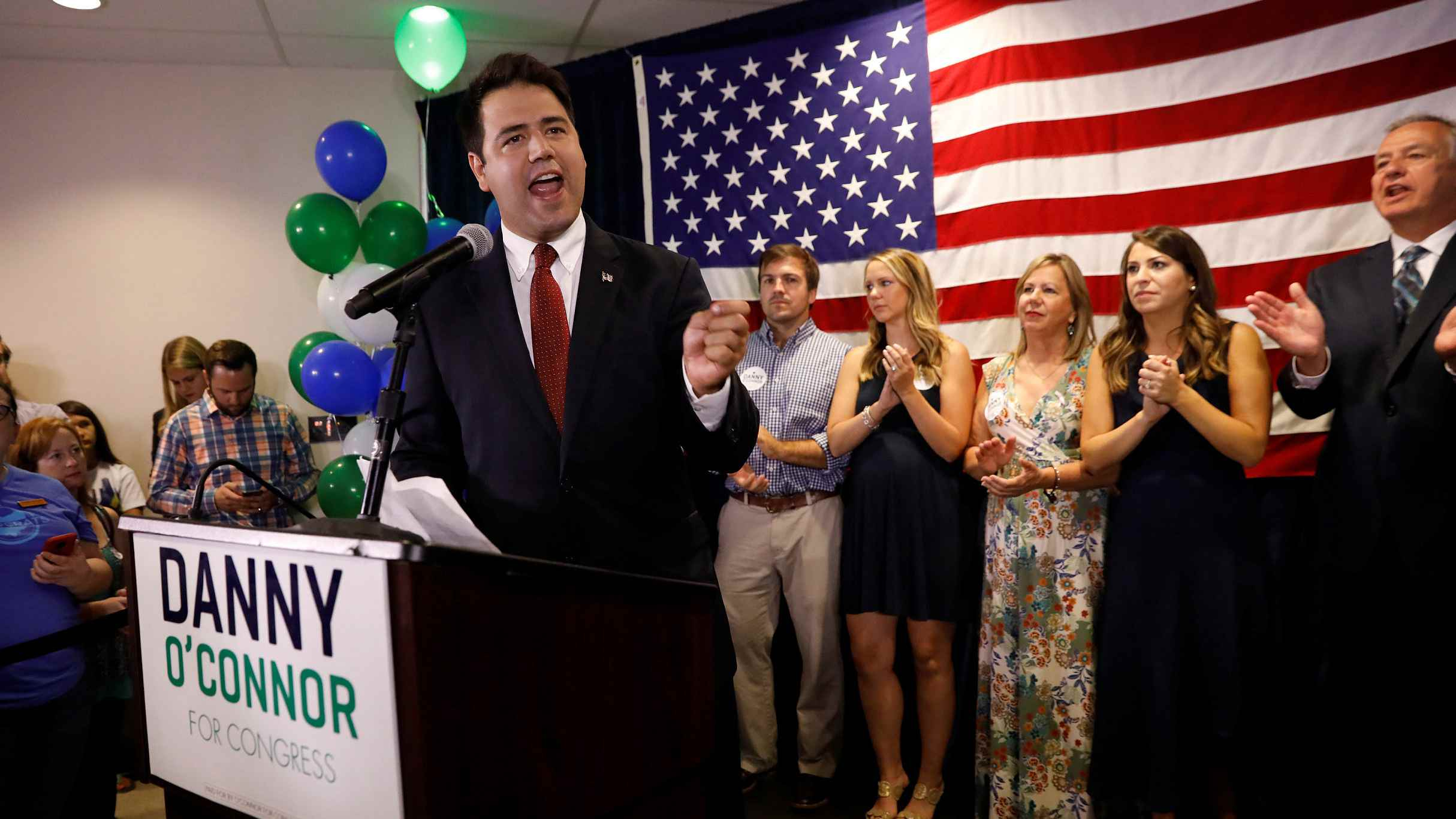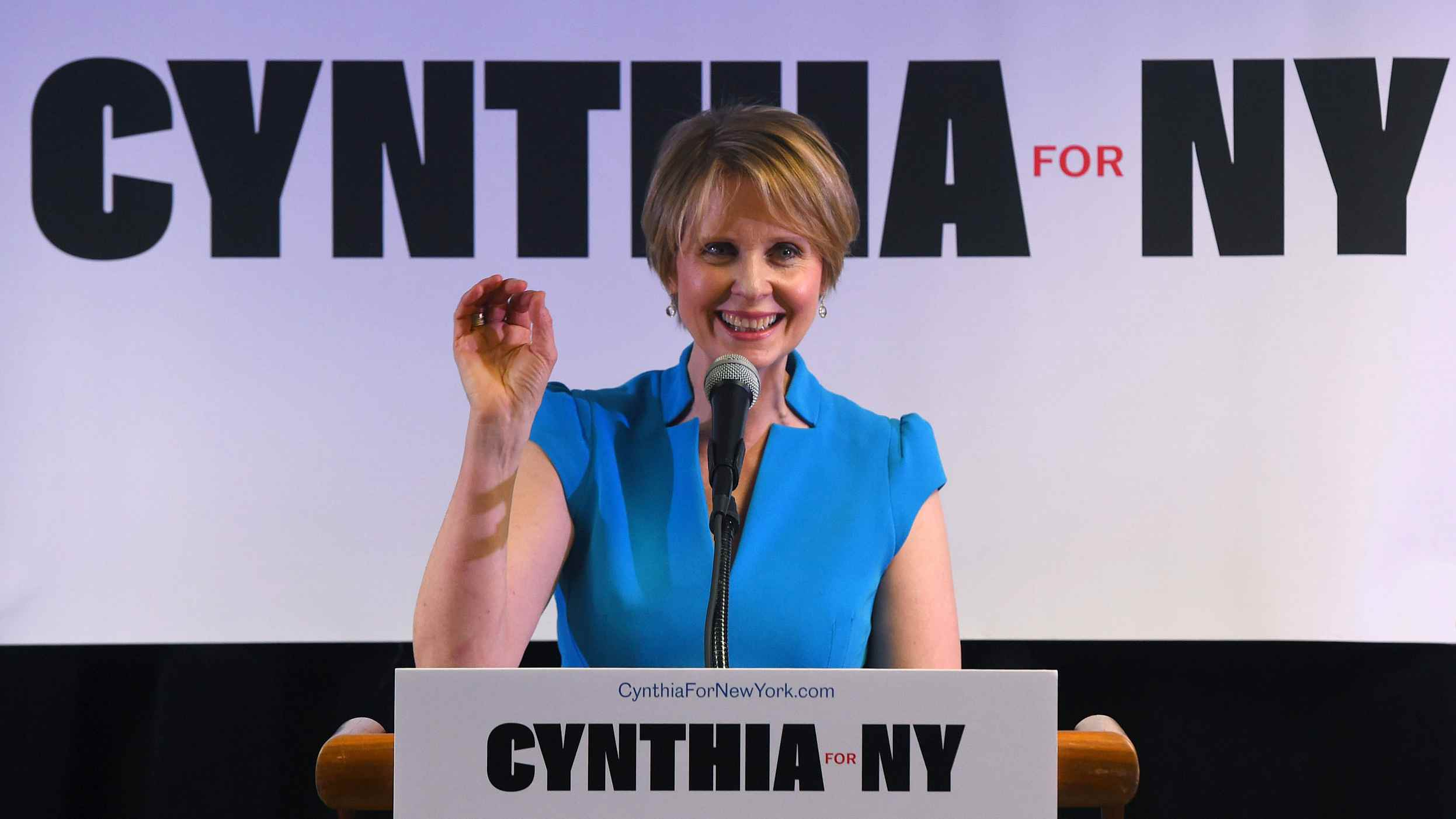
Politics
17:33, 09-Aug-2018
US midterms: Democrats hopeful of thwarting Trump agenda
Updated
17:08, 12-Aug-2018
By John Goodrich

The final special election before the US midterms is over, and 90 days of intense campaigning lie ahead in 470 congressional races that will help shape the final two years of President Donald Trump's first term.
State of play
The Republicans currently hold the presidency and both houses of Congress – but in November the Democrats have an opportunity to take the House of Representatives and possibly the Senate, and with it derail the Trump agenda.

Democrats need a 23-seat net gain to take the House of Representatives, and at least 48 of the 435 seats are competitive according to analysis from the New York Times.
A net gain of just two seats is needed for the Democrats to win the Senate, but the party faces a tougher challenge – it is defending more than two-thirds of the 35 contested seats.
The Republicans are more vulnerable in gubernatorial races, where they must defend 23 of 36 states capitols up for grabs.
Historically, the president's party loses seats in midterm elections. A FiveThirtyEight average of the generic ballot – an indicative poll which shows how Americans would vote now in a congressional election – put the Democrats 6.2 percent ahead of the Republicans on Wednesday.
Democrats overperform
This week's special and primary elections featured several important indicators for the midterms.
The Democrats look to have lost a special election in Ohio's 12th district, but disappointment was tempered by the slender margin in a district which has been Republican for over three decades and Trump won by double-digits in 2016.

Democratic candidate Danny O’Connor speaks to supporters in Ohio’s 12th district at the election night party, August 7, 2018. /VCG Photo
Democratic candidate Danny O’Connor speaks to supporters in Ohio’s 12th district at the election night party, August 7, 2018. /VCG Photo
With the race yet to be officially called, Republican Troy Balderson (50.2 percent) holds a narrow lead over Democrat Danny O'Connor (49.3 percent). The district has a 14-point lean towards the Republicans, according to FiveThirtyEight, so the close result means a 13-point swing to the Democrats.
The tight margin is a positive sign for Democrats, who have overperformed by an average of 16 points in special elections this year – Republicans will be relieved to have held on having dispatched the president and vice-president, as well as over three million US dollars in advertising money, to the district.
The Cook Political Report's Partisan Voter Index shows there are 68 congressional districts held by the Republicans that are less conservative than Ohio 12.
Fundraising and turnout
The Republicans will not be able to prop up all vulnerable candidates with such largesse in November, and many of its candidates are already being out-fundraised by the Democrats.
The party has also been hit financially by the Koch network's decision to withhold support to candidates who back Trump's protectionist trade policies, though donors who profited from last year's tax cuts are expected to give heavily.

Troy Balderson shakes hands with US President Donald Trump during a Make America Great Again rally in Ohio, August 4, 2018. /VCG Photo
Troy Balderson shakes hands with US President Donald Trump during a Make America Great Again rally in Ohio, August 4, 2018. /VCG Photo
Turnout is typically lower in midterm elections than presidential. Trump has claimed his decision to campaign for Balderson swung the race – and strategists agree that his support energized voters. However, he can't stump for every vulnerable Republican days before Nov. 6 and there are concern traditional party supporters may choose not to vote.
The Ohio election also confirmed the suburbs as a key battleground: traditionally conservative suburban voters have moved decisively towards the Democrats in special elections this year. Turnout in the suburbs has been significantly higher than Republican supporting rural areas.
Female record, Democrat splits
A record number of major-party candidates contesting the midterms will be women, including former Sex and the City star Cynthia Nixon, who is running for governor of New York.
There are 11 female major-party nominees for governor and at least 182 for the House of Representatives – both increases on previous highs – according to the Center for American Women and Politics (CAWP).
"The problem has not been women can’t get elected, we aren’t seeing enough women running,” Debbie Walsh, the director of CAWP, told The Independent. “Now as we would expect, when you set records for candidates you then set records for women nominees."

Former Sex and the City star Cynthia Nixon speaks at her first event since announcing that she’s running for governor of New York, in Brooklyn, New York, March 20, 2018. /VCG Photo
Former Sex and the City star Cynthia Nixon speaks at her first event since announcing that she’s running for governor of New York, in Brooklyn, New York, March 20, 2018. /VCG Photo
Democrats are facing splits, however, notably between establishment candidates and progressives such as Alexandria Ocasio-Cortez, a 28-year-old who beat a party leader in a New York primary in June and has since become a national figure.
The candidates Ocasio-Cortez campaigned for in primaries on Tuesday were less unsuccessful, though one of the candidates she backed, Rashida Tlaib, is on course to become the first Muslim woman in Congress.
Trump foreign policy negative
New polling suggests that foreign policy could also be a factor in the midterms.
A Hart research survey published by National Security Action, an advocacy group, on Wednesday indicated that 56 percent of Americans believe US foreign policy is heading in the wrong direction under Trump.
A majority also disapproved of Trump's handling of relations with China and Russia, as well as trade relations with other countries.
Why do the midterms matter?
A Democratic majority in either chamber of Congress would give Trump little chance of pursuing a hardline domestic agenda, and also put court and cabinet nominations in jeopardy.
It would give Democrats control of committees and result in more aggressive oversight of and investigations into the White House – it could even lead to attempts to impeach the president.
So long as Trump remains in the White House, the Democrats could do little to enact their own agenda – but gridlock would be likely.
If the Republicans hold on, little is likely to change. Base-pleasing policies would be on the agenda in the run up to the 2020 presidential poll, and appointments would be little trouble.
(Top image: Democratic candidate for the US House of Representatives Alexandria Ocasio-Cortez. /VCG Photo)

SITEMAP
Copyright © 2018 CGTN. Beijing ICP prepared NO.16065310-3
Copyright © 2018 CGTN. Beijing ICP prepared NO.16065310-3